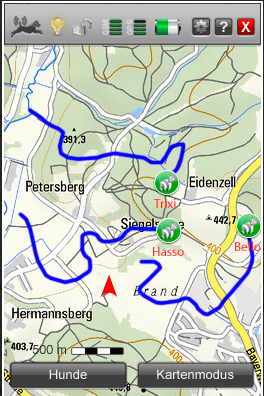

- #Retrieve photo geotag install#
- #Retrieve photo geotag code#
That will show both latitude and longitude coordinates and altitude. Then select the “More Info” tab (the “i” icon) and the “GPS” sub-tab:

You can view this, for example, by opening the file in Apple Preview and hitting Command-I to bring up the Inspector.
When you import your photos to your computer with your usual method, their location can now be seen in the metadata. 
LOG file, not that I have any use for that. Separately, the track is saved on the memory card as a.

There are no sidecar files or proprietary databases to worry about. Both JPEG files and Raw files are embedded with a geotag by this method.To send a track to the camera, swipe its title from right to left and tap “Add Geotag”:Ī confirmation that photos in the camera were geotagged will appear when the operation is complete: with Wi-Fi connected, open OI.Track on your phone.
#Retrieve photo geotag code#
Still with the silly QR code on the camera, i.e. Simply turn on the camera’s Wi-Fi (by tapping the button on the screen), ignore the camera’s invitation to scan a QR code, turn on the phone’s Wi-Fi, and select the camera SSID from the list of Wi-Fi networks. This is much easier the second and subsequent times. To geotag your photos at the end of your shoot / day / holiday, re-establish a Wi-Fi link between phone and camera. The track that was recorded shows up in the list in OI.Track: Give it a name or accept the default name (which includes the date): When you’re done taking pictures, stop the track by toggling the switch, then tap “Stop and Save”:. Battery usage for GPS tracking is minimal with a modern phone. It will log your location in the background as you use your phone for other tasks or leave it in your pocket. Tap the “Start Logging” toggle in OI.Track to start the log: No Wi-Fi connection is needed during this process. Now you can use your phone to record a GPS track while you take pictures with your camera. Tap “End Wi-Fi” on the camera to turn off the camera’s Wi-Fi, and turn off your phone’s Wi-Fi. Presumably not very often unless you’re photographing from a 300 km/h aeroplane where a one-second clock-sync error would throw off the location by enough to matter. I’m not sure how often this needs to be done after the first occasion. This will synchronise the camera clock to GPS time: Back in OI.Track’s settings, tap “Set Date Time”. So just leave it (the camera display may sleep anyway). If you back out of it, as I kept doing by instinct, you’ll turn off the camera’s Wi-Fi radio. It’s unintuitive to continue seeing the QR code screen on the camera after the connection has been made, but ignore it. If the camera shows a little “1” (for one connection) beside the Wi-Fi signal icon – and it always does in my case – it has successfully connected to your phone. With my iPhone SE I always get an “Unable to Connect to the Camera” error message: Tap “Start Setup” in OI.Track to make the connection:. It will read it automatically and propose to set up a Wi-Fi link. A “Wi-Fi Starting” screen will appear, followed swiftly by a QR code:īack in OI.Track, tap “Scan” and point the phone’s camera at the Olympus camera’s QR code: Turn on Wi-Fi on your Olympus camera by tapping the Wi-Fi icon at the top-left of the screen:. In OI.Track, tap the settings cog at the top-right, then tap “Easy Setup”. #Retrieve photo geotag install#
Install the free Olympus Image Track app from your phone’s app store.I couldn’t get straight answers from anyone about how it worked before I bought an Olympus camera. Its operation is fairly simple but poorly documented. Olympus provides a mobile app, called Olympus Image Track or OI.Track (with little consistency), that allows your mobile phone to act as the GPS tracker and automates the geotagging process. If the camera’s clock is accurately set, so that it is synchronised with the GPS receiver, the location of each photo can be found later by looking up the track location at the time of the photo. Readers from the distant future will find this hard to believe.Ī workaround is to track your location with a GPS receiver in another device while taking pictures with the camera. In this way, location metadata adds value to our photo collections.ĭespite this, camera manufacturers do not usually include $5 GPS receivers in their products. Being able to search by location makes it easier to find old photos and integrate them into new projects. What’s more, many of us seldom or never revisit old photos because they’re so hard to find in a massive digital library. This becomes more urgent as we take more photos in more locations. The problem often arises that we cannot recall where a photograph was taken.








 0 kommentar(er)
0 kommentar(er)
